Complete Solutions to Subjective of chapter WORK, POWER & ENERGY of Class 11 book with complete answers and questions
| Class 11 | PHYSICS |
| Chapter | WORK, POWER & ENERGY |
| CENGAGE PHYSICS | Subjective |
| Number Of Questions | 23 |
| Academic Year | 2023-24 |
In figure, the pulley shown is smooth. The spring and the string are light. Block B slides down from the top along the fixed rough wedge of inclination `theta`. Assuming that the block reaches the end of the wedge, find the speed of the block at the end. Take the coefficient of friction between the block and the wedge to be `mu` and that the spring was relaxed when the block was released from the top of the wedge.
 03:49View Solution
03:49View SolutionThe potential energy (in SI units) of a particle of mass `2kg` in a conservative field is `U=6x-8y`. If the initial velocity of the particle is `vecu=-1.5hati+2hatj`, then find the total distance travelled by the particle in the first two seconds.
03:58View SolutionA small block of mass `20kg` rests on a bigger block of mass `30kg`, which lies on a smooth horizontal plane. Initially the whole system is at rest. The coefficient of friction between the blocks is `0.5`. The horizontal force `F=50N` is applied on the lower block.
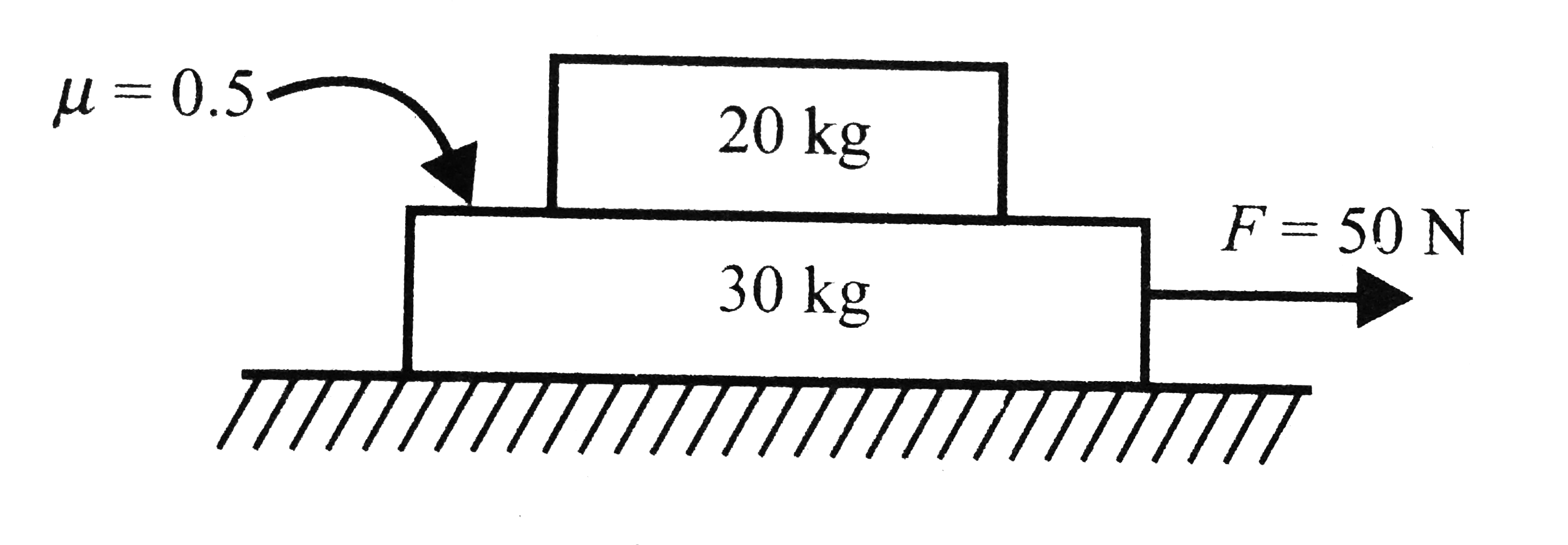
a. Find the work done by fricitonal force on upper block and on the lower block in `t=2s`.
b. Is the magnitude of work done by the frictional force on upper and lower blocks same?
c. Is the work done by the frictional force on the upper block converted to heat or mechanical energy or both?06:17View SolutionA small block of mass `m=1kg` is attached with one end of the spring of force constant `K=110Nm^-1`. Other end of the spring is fixed to a rough plane having coefficient of friction `mu=0.2`. The spring is kept in its natural length by an inextensible thread ties between its ends as shown in figure. If the thread is burnt, calculate the elongation of the spring when the block attains static equilibrium position.
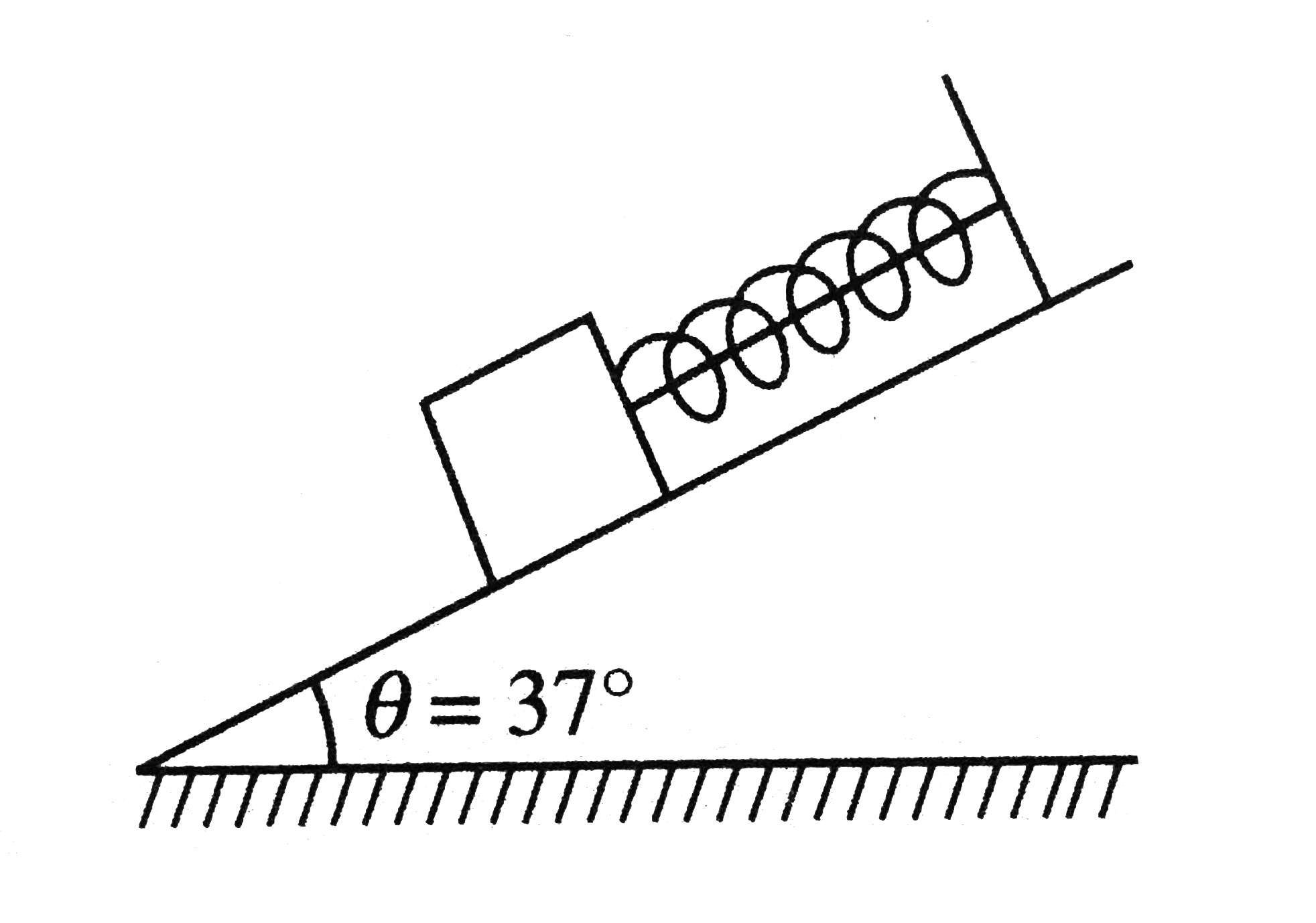 07:06View Solution
07:06View SolutionTwo identical beads, each of `m=100g`, are connected by an inextensible massless string, which can slide along the two arms AC and BC of a rigid smooth wire frame in a vertical plane. If the system is released from rest, the kinetic energy of the first bead when the second bead has moved down by a distance of `0.1m` is `xxx10^-3J`. Find the value of `x(g=10ms^-2)` (shown situation is after movement of `0.1m`).
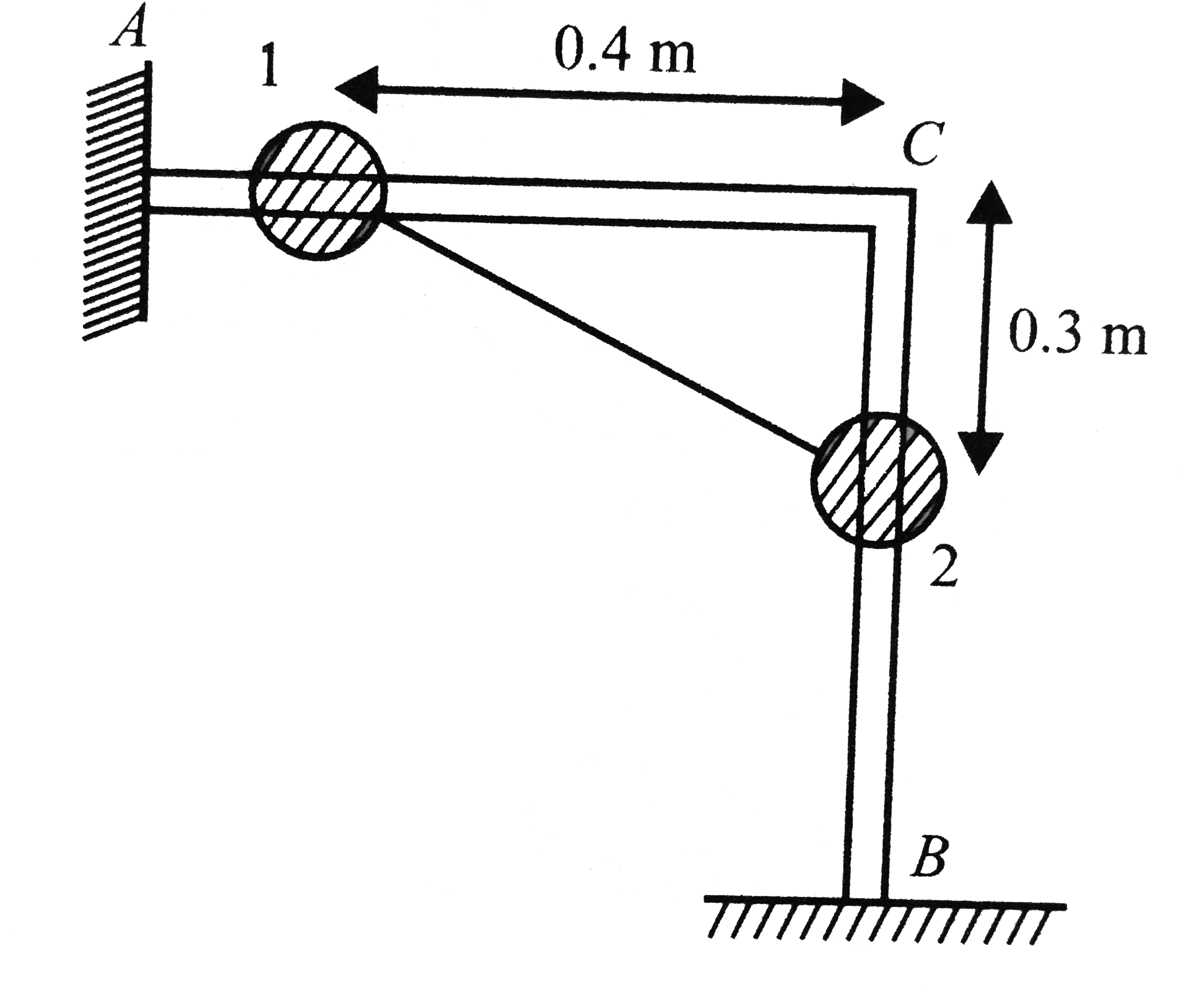 04:57View Solution
04:57View SolutionAB is a quarter of smooth circular track of radius `R=6m`. A particle P of mass `0.5kg` moves along the track from A to B under the action of the following forces.

a. A force `F_1` directed always towards the point B, its magnitude is constant and is equal to `20N`.
b. A force `F_2` directed along the instantaneous tangent to the circular track, its magnitude is `(15-10S)N`, where S is the distance travelled in metre.
c. A horizontal force of magnitude `30N`.
Find the work done by forces mentioned in (a), (b) and (c)07:15View SolutionIn an ideal pulley particle system, mass `m_2` is connected with a vertical spring of stiffness `k`. If mass `m_2` is released from rest, when the spring is underformed, find the maximum compression of the spring.
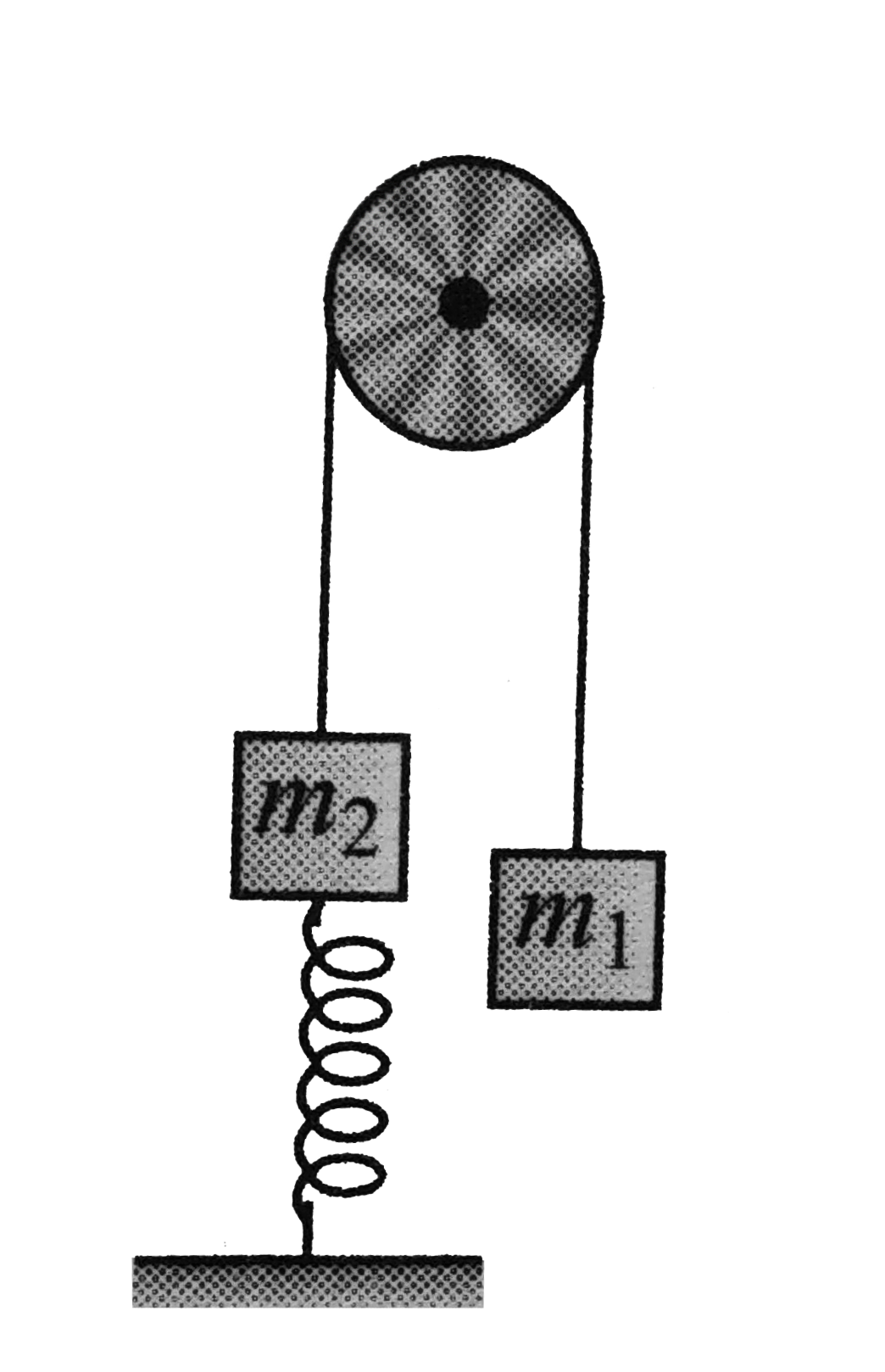 03:49View Solution
03:49View SolutionGiven `k_1=1500Nm^-1`, `k_2=500Nm^-1`, `m_1=2kg`, `m_2=1kg`. Find:
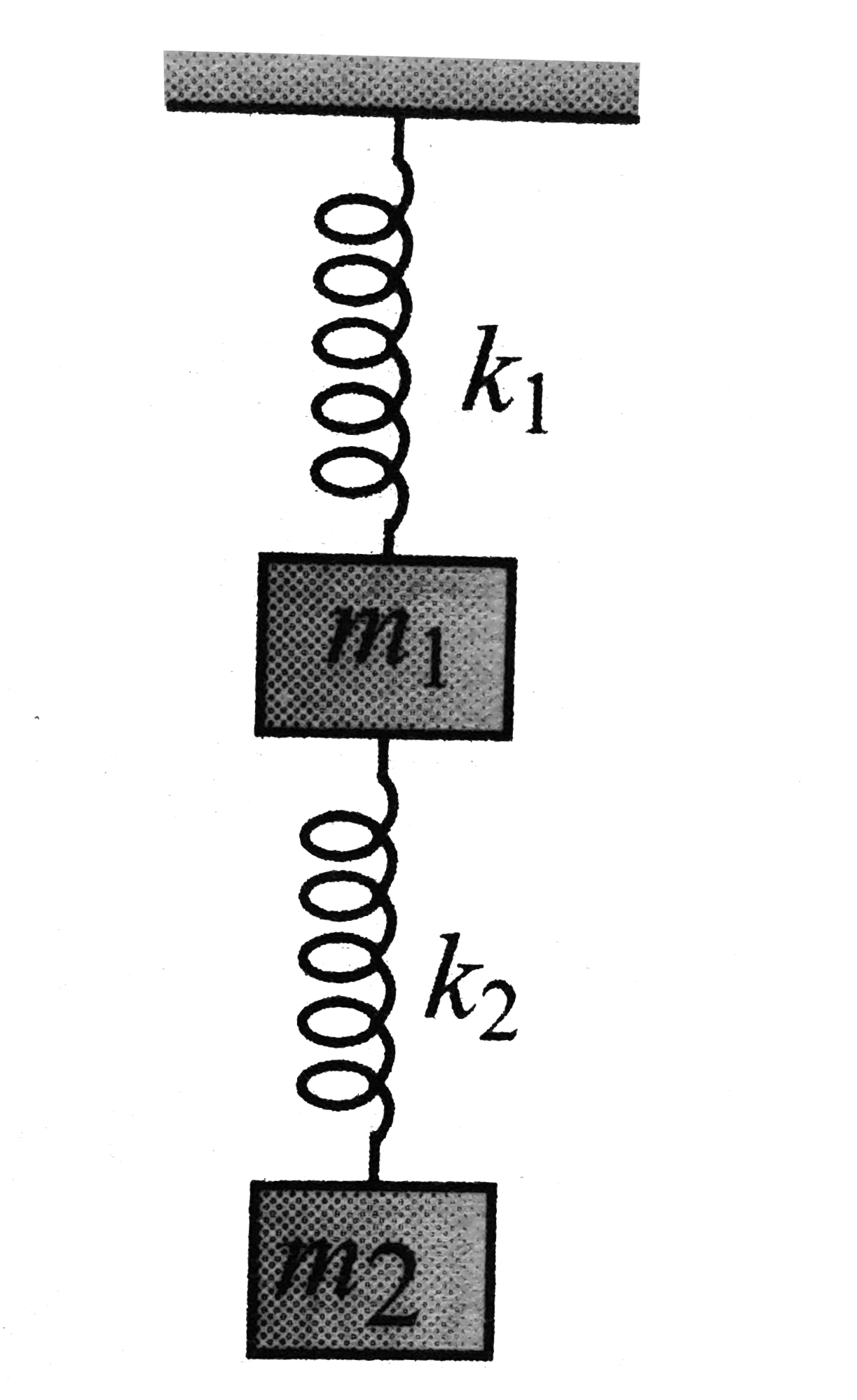
a. potential energy stored in the spring in equilibrium, and
b. work done in slowly pulling down `m_2` by `8cm`.05:25View SolutionA block of mass `m` is dropped onto a spring of constant `k` from a height `h`. The second end of the spring is attached to a second block of mass M as shown in figure. Find the minimum value of h so that the block M bounces off the ground. If the block of mass m sticks to the spring immediately after it comes into contact with it.
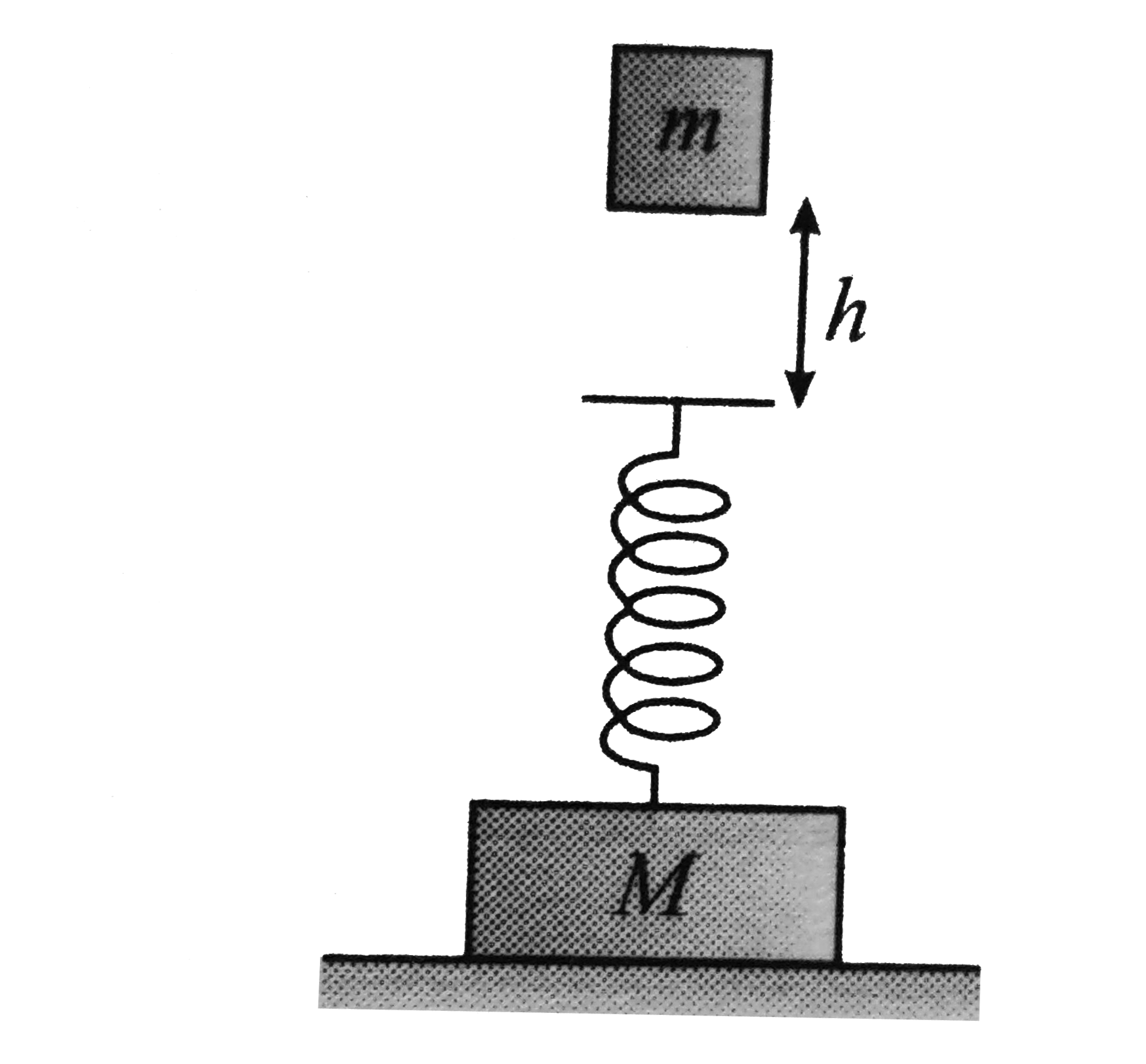 04:27View Solution
04:27View SolutionA particle of mass `m` attached with a massless spring natural length `l` and stiffness `k` is released from rest from the horizontal position of the relaxed spring. When the particle passes through its lowest point, the maximum length of the spring becomes `2l`. Find the:
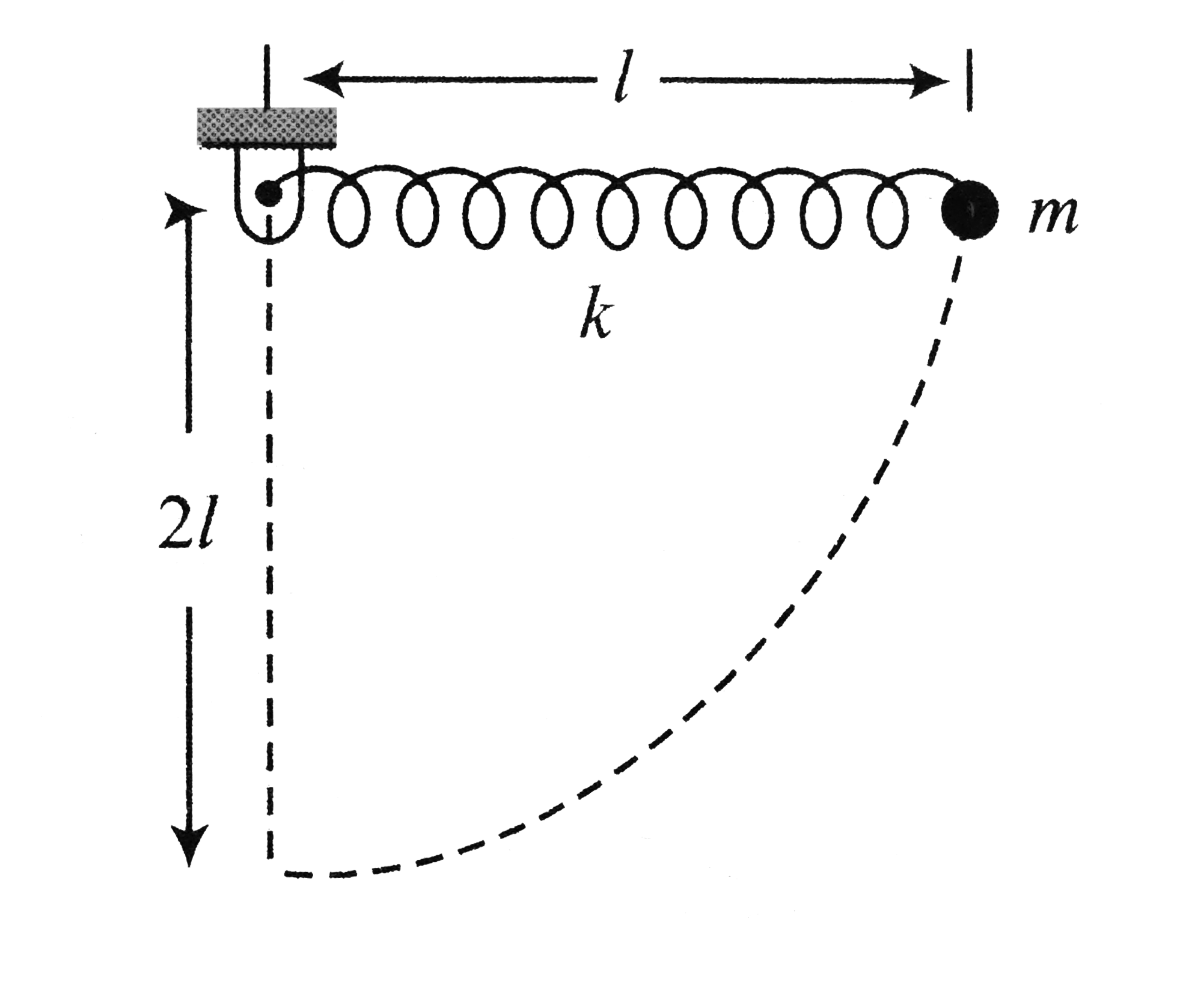
a. speed of the particle at its lowest point.
b. acceleration of the particle at its lowest position.03:53View SolutionTwo blocks having masses `8kg` and `16kg` are connected to the two ends of a light spring. The system is placed on a smooth horizontal floor. An inextensible string also connects B with ceiling as shown in the figure at the final moment. Initially the spring has its natural length. A constant horizontal force F is applied to the heavier block as shown. What is the maximum possible value of F so the lighter block doesn't loose contact with ground?
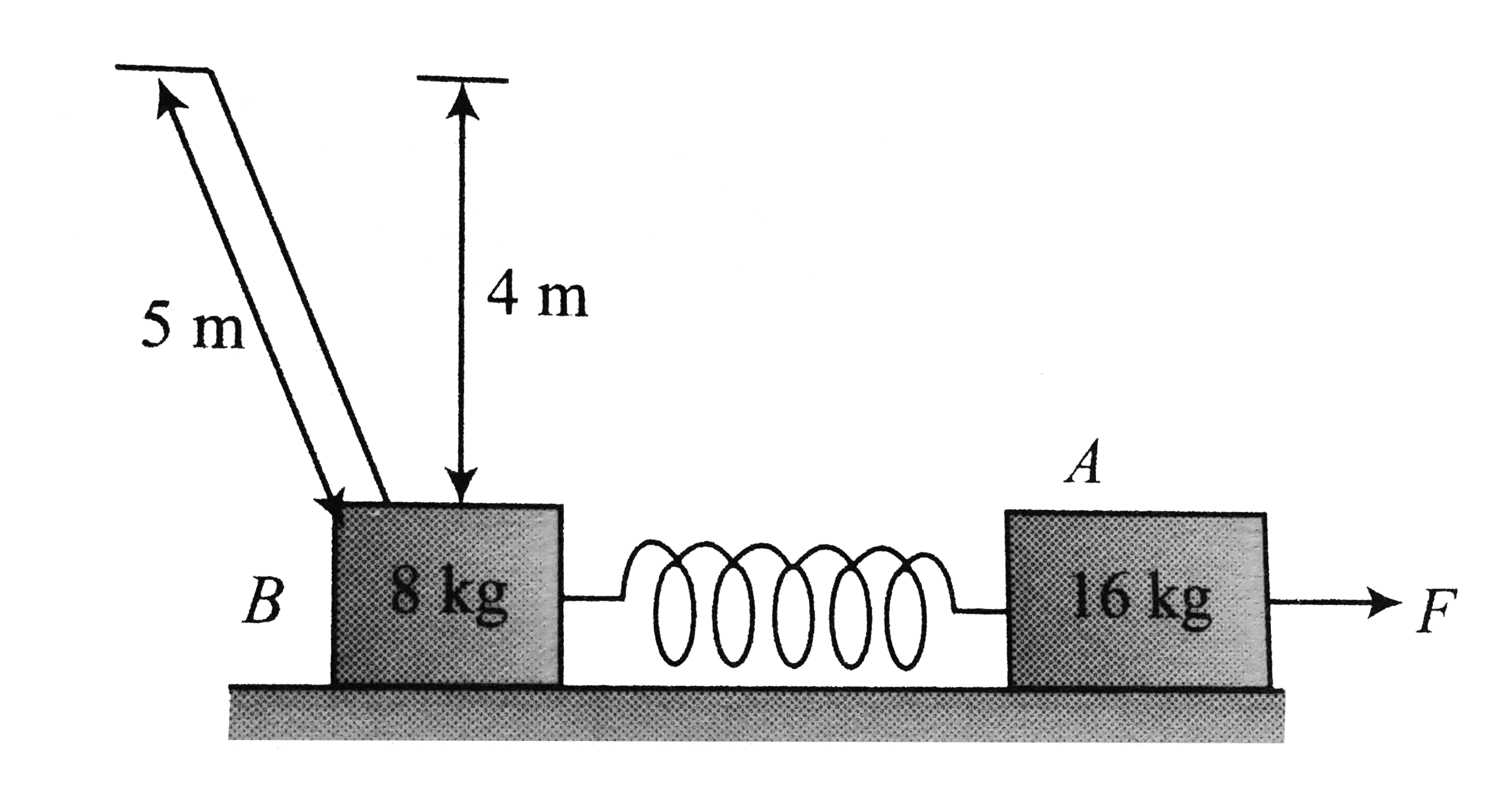 03:53View Solution
03:53View Solutiona. A `2-kg` situated on a smooth fixed incline is connected to a spring of negligible mass, with spring constant `k=100Nm^-1`, via a frictionless pulley. The block is released from rest when the spring is unstretched. How far does the block moves down the incline before coming (momentarily) to rest? What is its acceleration at its lower point?
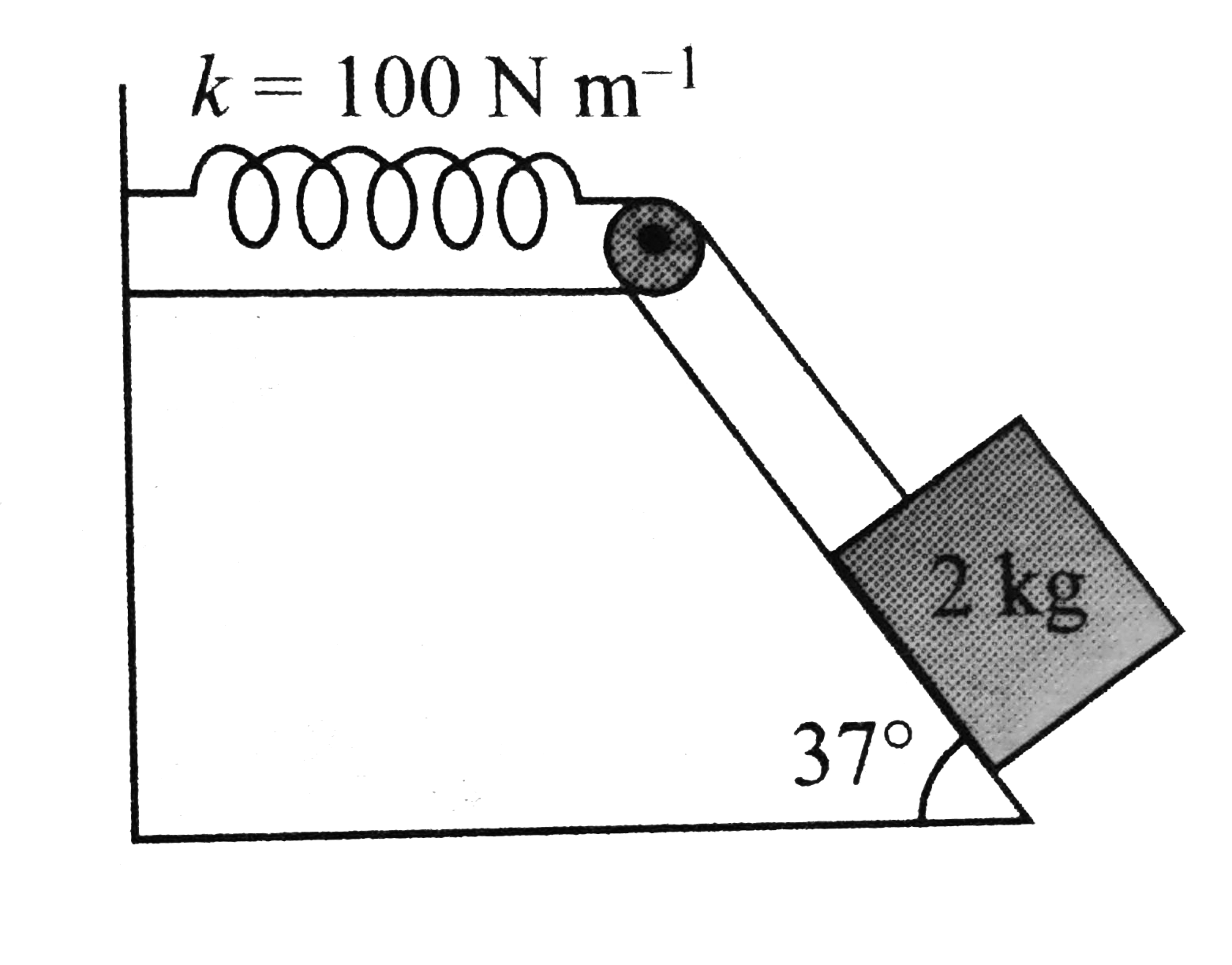
b. The experiment is repeated on a rough incline. If the block is observed to move `0.20m` down along the incline before it comes to instantaneous rest, calculate the coefficient of kinetic friction.12:08View SolutionA ring of mass `m=1kg` can slide over a smooth vertical rod. A light string attached to the ring passing over a smooth fixed pulley at a distance of `L=0.7m` from the rod as shown in figure.

At the other end of the string mass `M=5kg` is attached, lying over a smooth fixed inclined plane of inclination angle `37^@`. The ring is held in level with the pulley and released. Determine the velocity of ring when the string makes an angle `(alpha=37^@)` with the horizontal. `[sin 37^@=0.6]`04:43View SolutionFind how much mass `m` will rise if `4m` falls away. Blocks are at rest and in equilibrium.
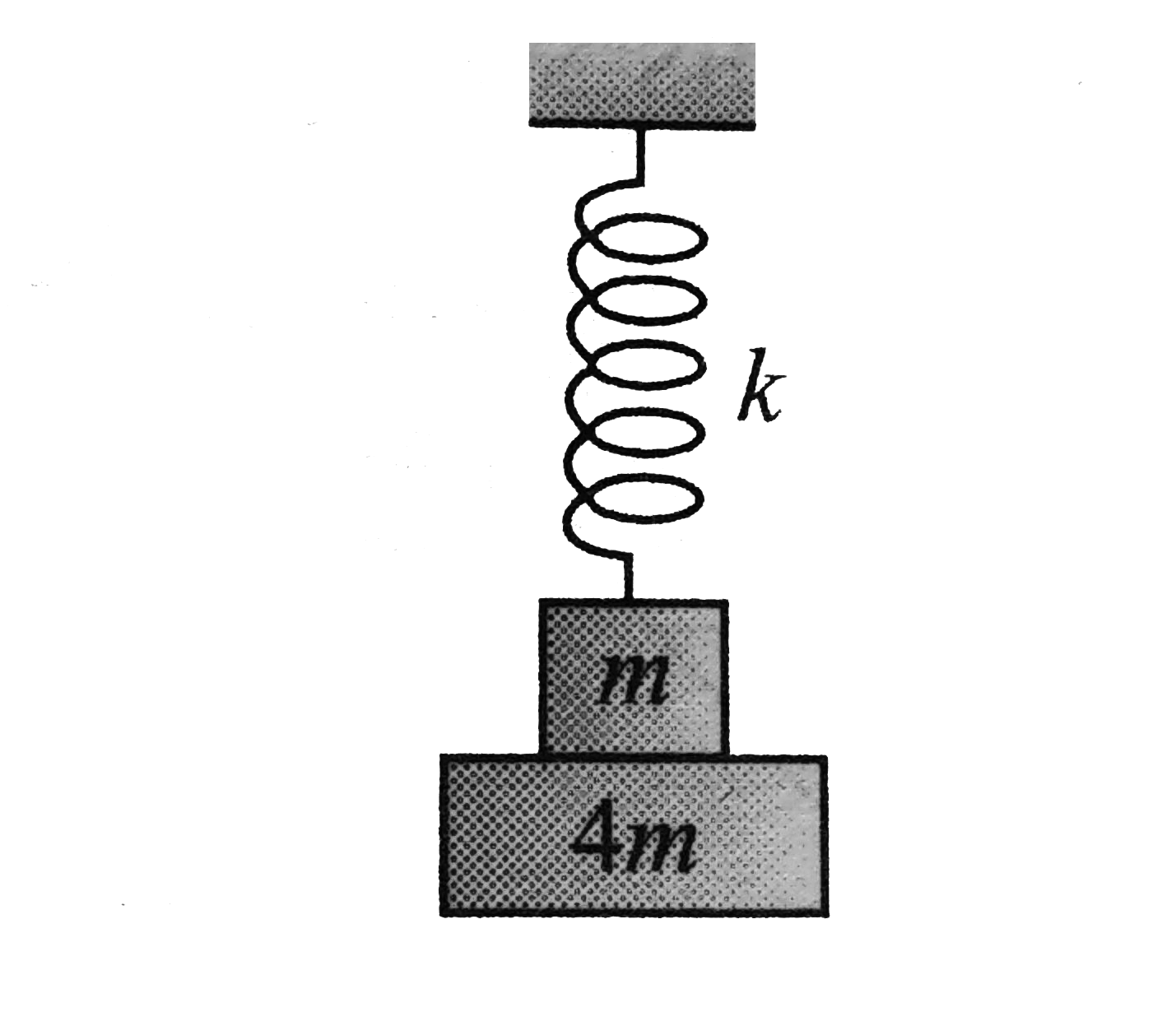 04:17View Solution
04:17View SolutionA block of mass `m` is released from rest onto a spring. A having stiffness `k_A=mg//2h` as shown in figure. If the block compresses spring B through a distance h, find the:
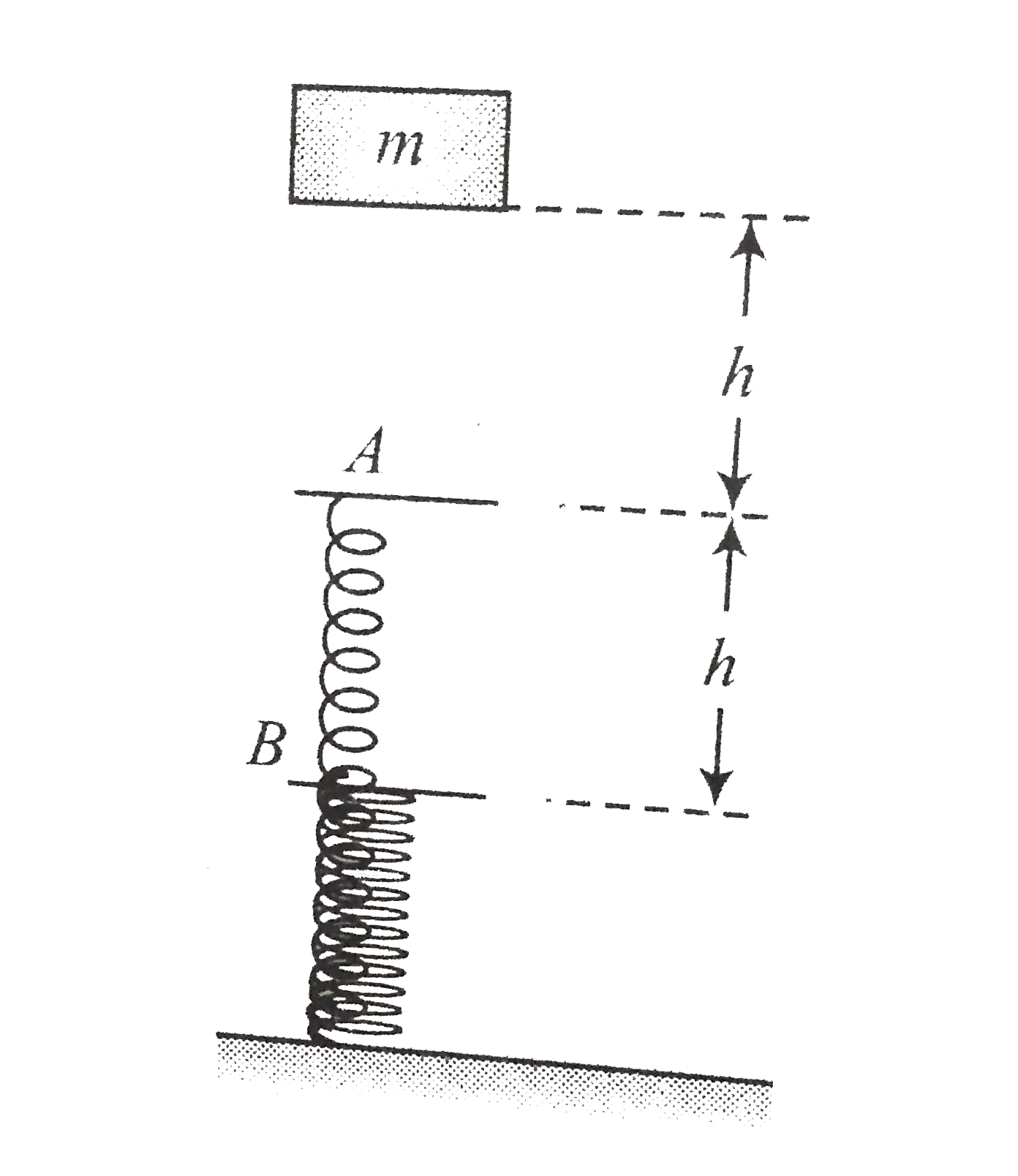
a. stiffness of the spring B
b. equilibrium position of the block
c. maximum velocity of the block
d. maximum acceleration of the block13:52View SolutionIn figure, the light spring is of force constant `k` and is on a smooth horizontal surface. Initially the spring is relaxed. Calculate the work done by an external agent to lower the hanging body of mass M slowly, till it remains in equilibrium.
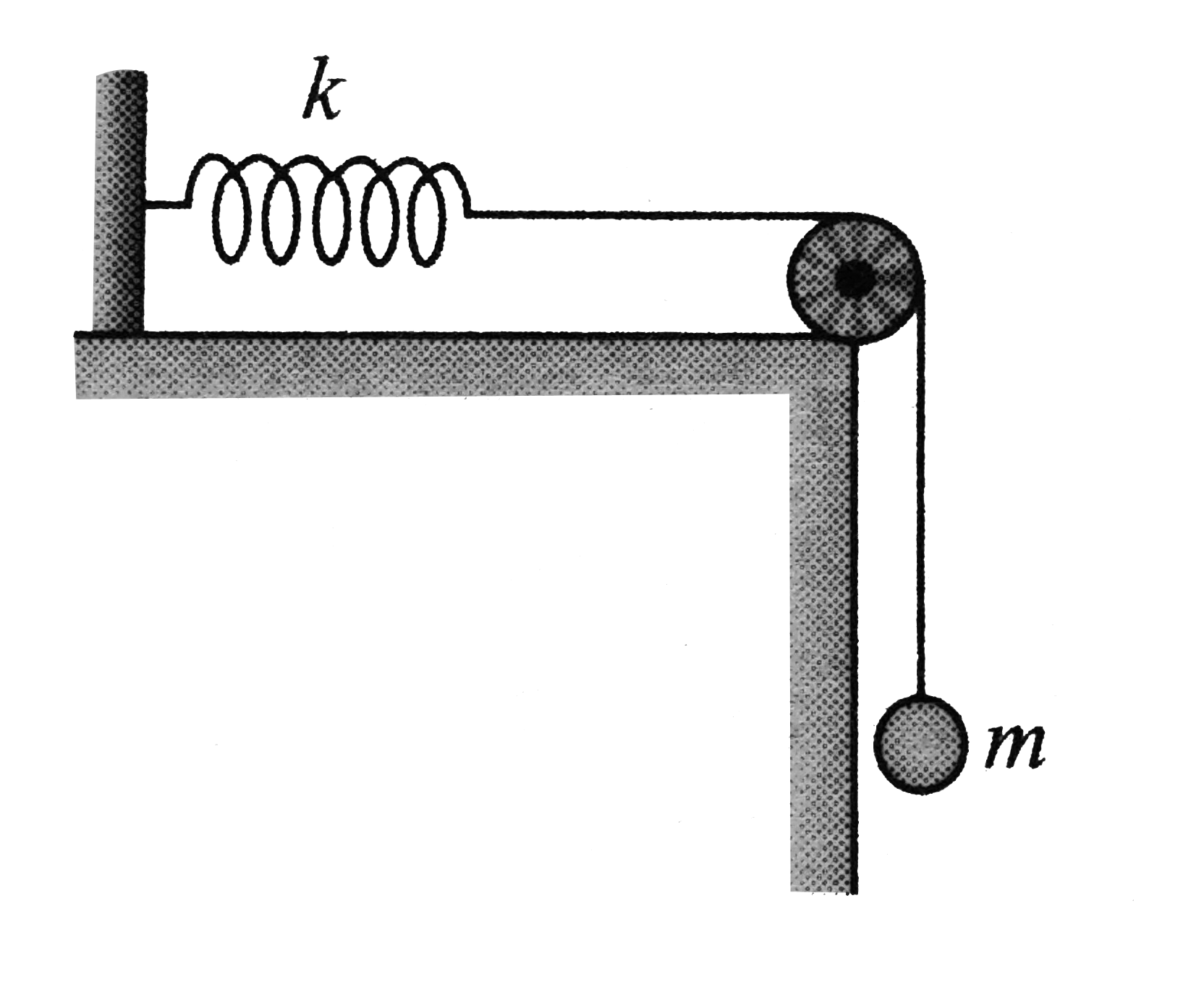 02:58View Solution
02:58View SolutionA vehicle of mass `m` starts moving along a horizontal circle of radius R such that its speed varies with distance s covered by the vehicle as `c=Ksqrts`, where K is a constant. Calculate:
a. Tangential and normal force on vehicle as fucntion of s.
b. Distance s in terms of time t.
c. Work done by the resultant force in first t seconds after the beginning of motion.06:26View SolutionA block A of mass `m` is held at rest on a smooth horizontal floor. A light frictionless, small pulley is fixed at a height of `6m` from the floor. A light inextensible string of length `16m`, connected with A passes over the pulley and another identical block B is hung from the string. Initial height of B is `5m` from the floor as shown in figure
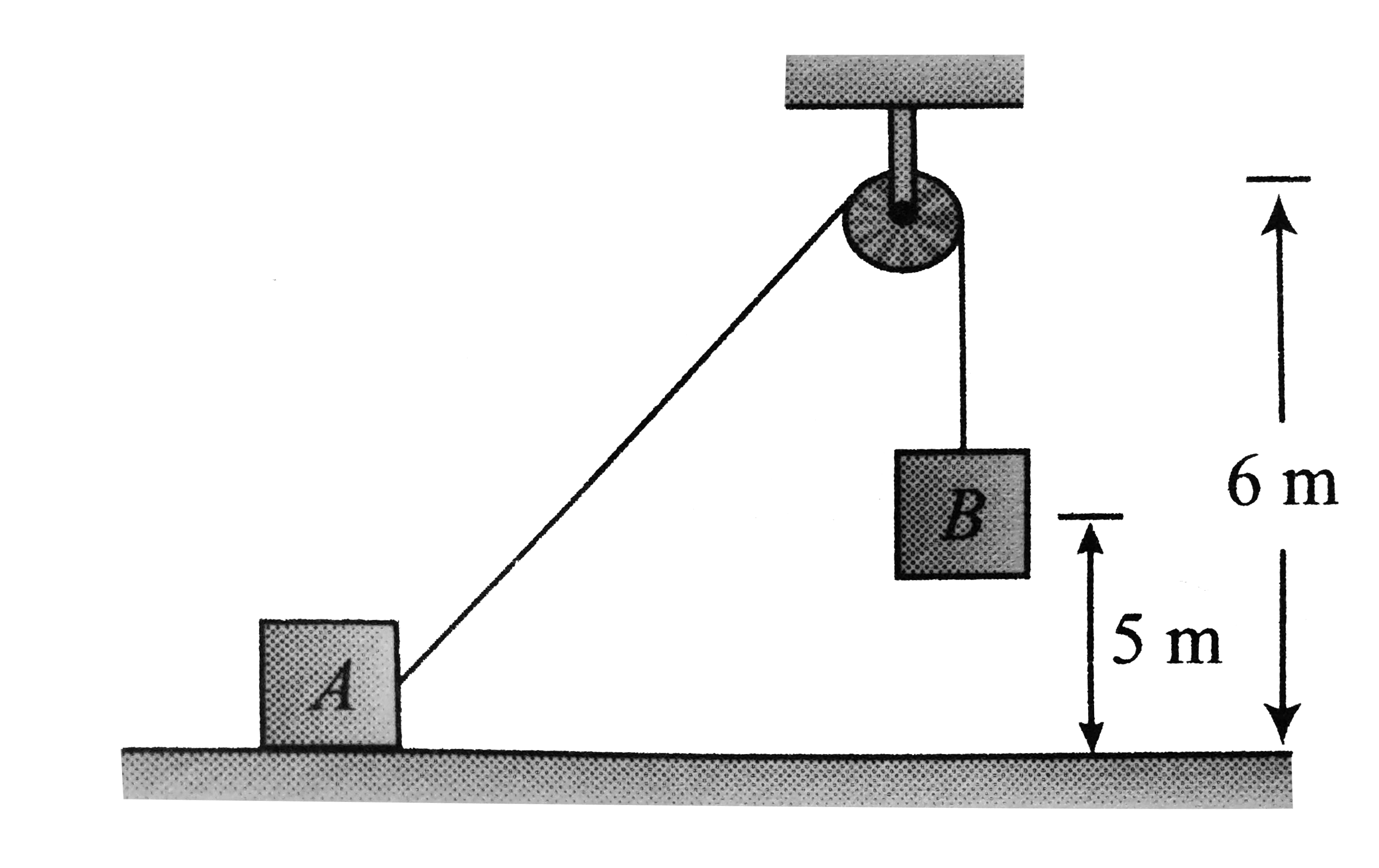
When the system is released from rest, B starts to move vertically downwards and A slides on the floor towards right.
a. If at an instant string makes an angle `theta` with horizontal, calculate relation between velocity `u` of A and `v` of B.
b. Calculate `v` when B strikes the floor. (`g=10ms^-2`).04:43View SolutionA constant force F pushes the block `m` till the wedge M starts sliding. If the stiffness of the light spring connecting M and m is K, coefficient of friction between block and wedge is `mu_1` and between the wedge and ground is `mu_2`, find the minimum value of the force F
 05:53View Solution
05:53View SolutionTwo blocks are connected by a massless string that passes over a frictionless peg as shown in figure. One end of the string is attached to a mass `m_1=3kg`, i.e., a distance `R=1.20m` from the peg. The other end of the string is connected to a block of mass `m_2=6kg` resting on a table. From what angle `theta`, measured from the vertical, must the `3-kg` block be released in order to just lift the `6kg` block off the table?
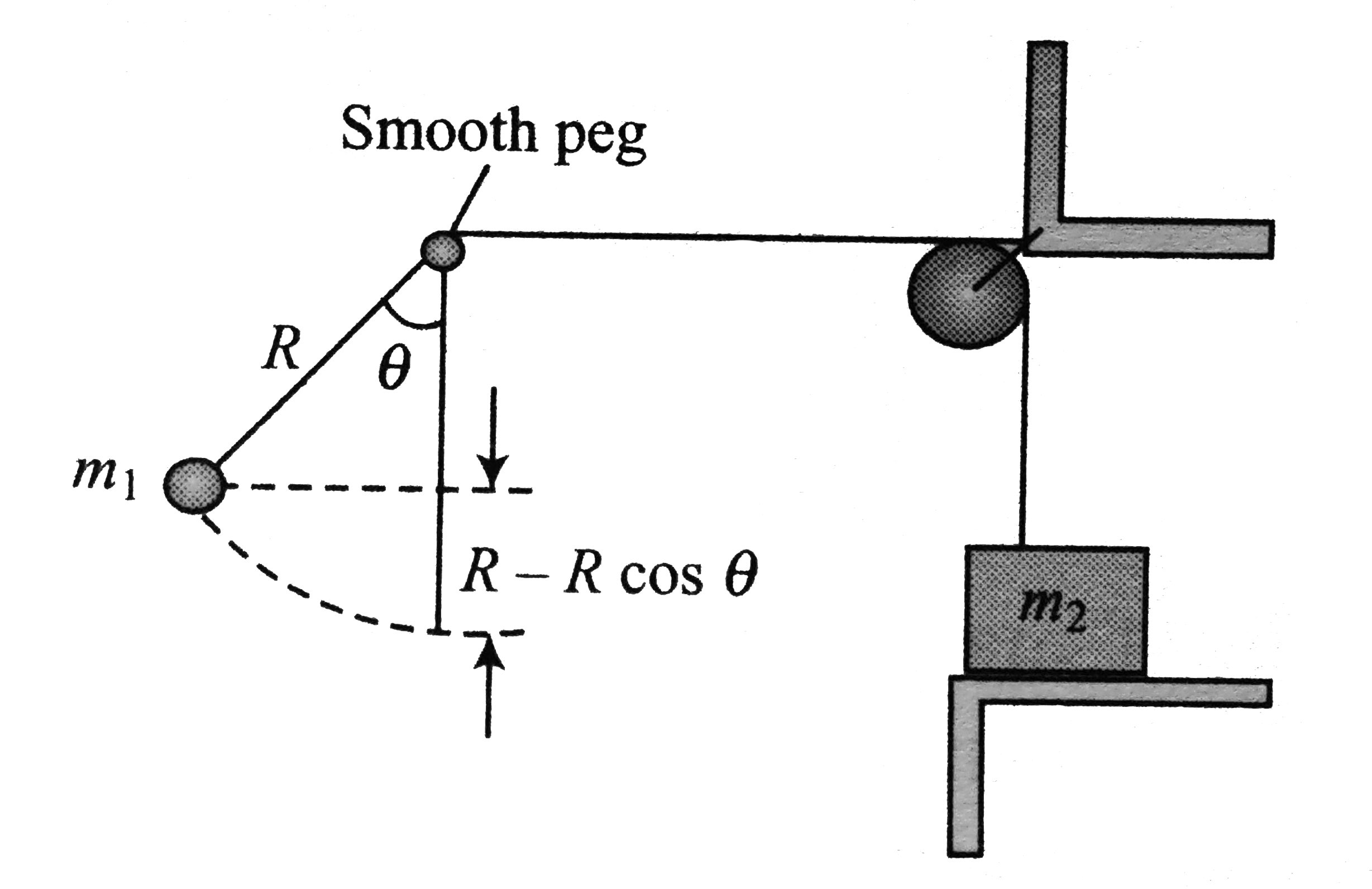 05:37View Solution
05:37View SolutionA bob of mass `m` is projected with a horizontal velocity `v=sqrt((gl)/(2))` as shown in figure. In consequence, it moves in a circular path in a vertical plane by the inextensible string which passes over the smooth fixed peg. Find the maximum angle that the bob swings in the left hand side.
 04:22View Solution
04:22View SolutionA block is projected with a speed `v_0` such that it strikes the point of projection after describing the path as shown by the dotted line. If friction exists for the parth of length `d` and the vertical circular path is smooth, assuming `mu`=coefficient of friction,
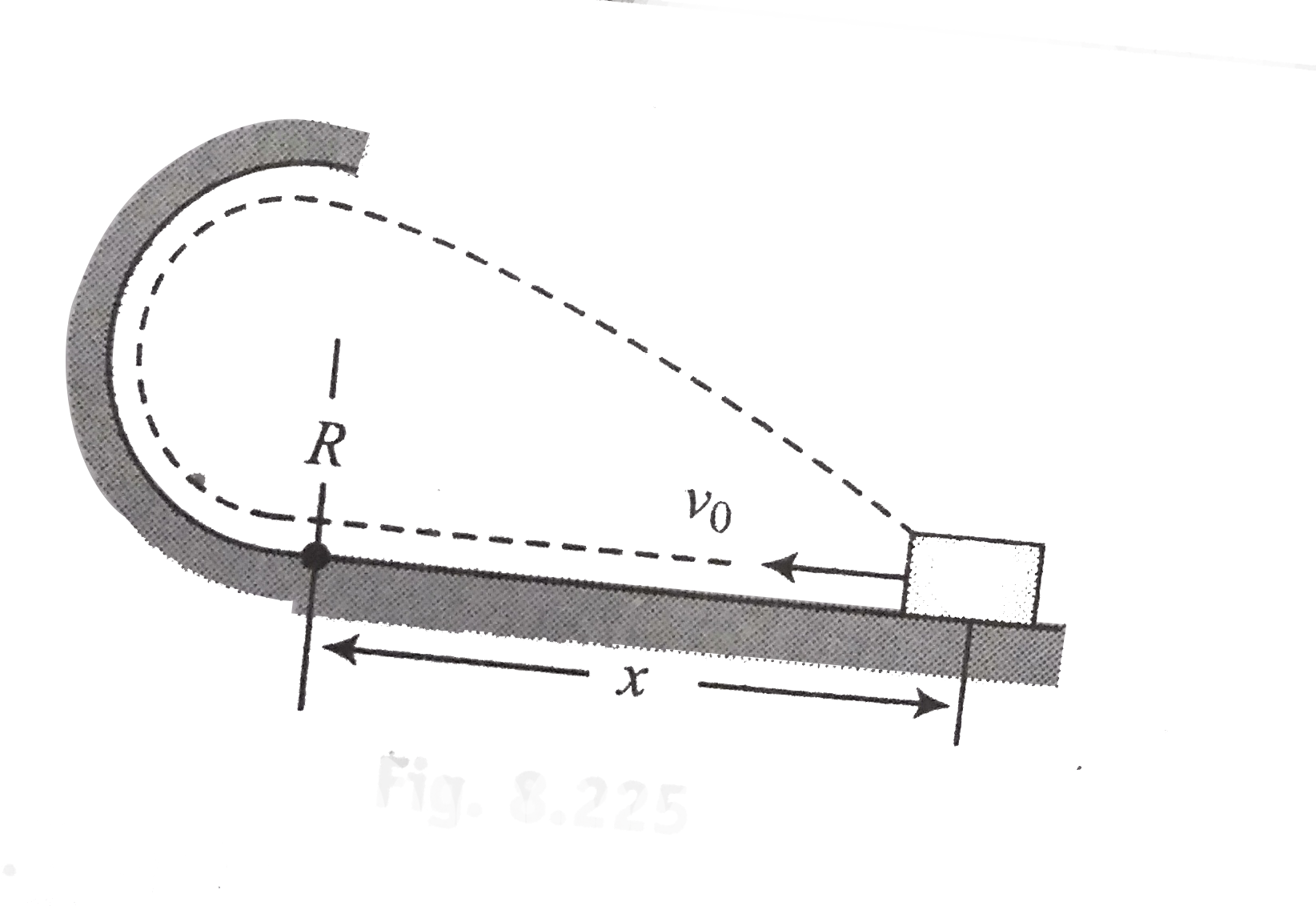
a. Find `v_0`.
b. What is the minimum value of `v_0`?04:21View SolutionA small ball is suspended from point O by a thread of length l. A nail is driven into the wall at a distance of `l//2` below O, at A. The ball is drawn aside so that the thread takes up a horizontal position at the level of point O and then released. Find
a. At what angle from the vertical of the ball's trajectory, will the tension in the thread disappear?
b. What will be the highest point from the lowermost point of circular track, to which it will rise?09:14View Solution
Subjective questions and complete solutions for chapter WORK, POWER & ENERGY of CENGAGE PHYSICS (ENGLISH) of Class 11
